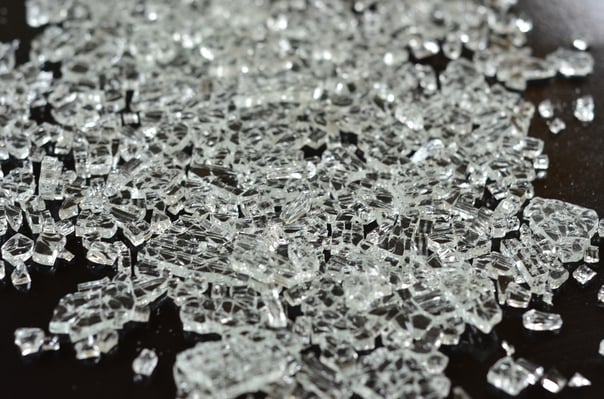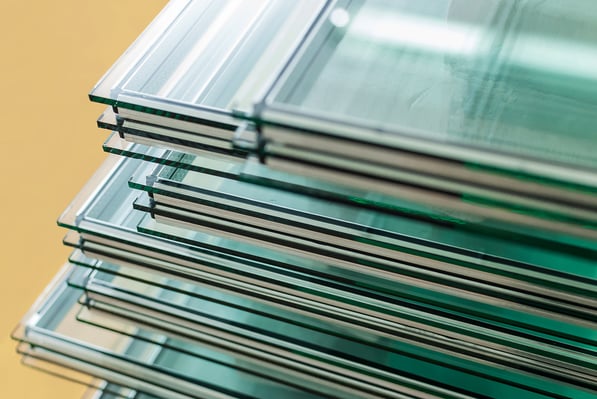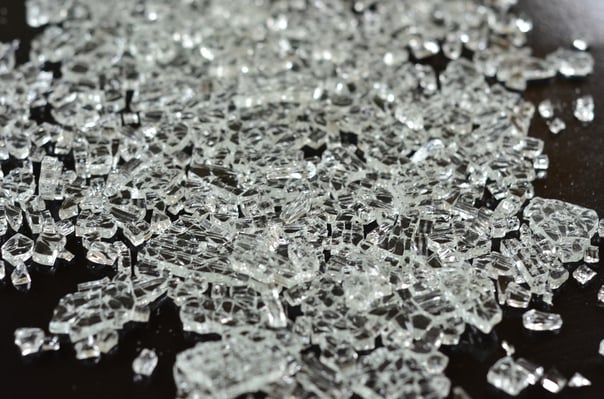What is tempered glass?
Tempered glass is a type of glass that is processed with thermal or chemical treatments, which increase its resistance. The tempering process leaves the outer surface of the glass in a state of compression and the inner surface in a state of tension. Due to these mechanical stresses, tempered glass breaks into granular pieces rather than sharp-edged shards, reducing the chance of injury. Tempered glass is also known as toughened glass or safety glass.
Due to its safety and strength, tempered glass is used in a variety of industries and applications, including construction projects. Some uses for tempered glass include vehicle windows, shower doors, refrigerator trays, architectural components, cell phone screens, and kitchen appliances.
Make sure your building uses the safest materials.
Tempered glass properties
Tempered glass is physically and thermally stronger than conventional glass. As mentioned previously, tempered glass is treated to create external and internal stresses in the material. The compressive surface tension of tempered glass is balanced by the tensile stress in the body.
For glass to be classified as tempered, its surface must have a minimum compressive stress of 69 megapascals (10,000 psi). So, for tempered glass to be considered safety glass, its surface compressive stress must exceed 100 megapascals (15,000 psi). If tempered glass breaks, the increased surface tension will result in small circular pieces rather than sharp shards. This property makes tempered glass suitable for high pressure and explosion-proof applications.

Tempered glass obtains its strength from the compressive stress on its surface. On the other hand, annealed glass has almost no internal stresses, which makes it very brittle – it forms microscopic surface cracks that break under stress. Tempered glass does not have these surface cracks, which prevents them from spreading or expanding when broken.
The main properties of tempered glass are summarized below:
- Versatility: Tempered glass can be molded into different shapes and styles to suit various applications.
- Impact resistance: The impact resistance of tempered glass is very high compared to float glass. This helps it withstand extreme conditions and temperatures.
- Strength: Tempered glass can be 3 to 7 times stronger than annealed glass, making it suitable for more demanding applications with high environmental loads.
- Optical Distortion: Tempered glass is not as transparent as float glass as the tempering process causes some optical distortions.
- Manufacturing: Any cutting or grinding must be done before tempering, as these processes will cause fractures when the glass is tempered.
Tempered Glass Applications
Tempered glass is used in applications that require thermal resistance, strength and safety. Passenger vehicles are a great example with the three conditions:
- As vehicles are often parked outdoors, they are subject to constant heating and cooling (thermal resistance).
- Vehicles must also withstand small impacts from road debris (strength).
- Sharp glass shards represent an additional danger in the event of an accident and tempered glass does not break into shards (safety).
The properties of tempered glass make it suitable for construction projects and many industrial applications.
Commercial buildings:
Tempered glass has many applications in the construction industry, which include commercial building envelopes and facades. Tempered glass can also be used in frameless assemblies such as frameless glass doors. Tempered glass is suitable for structurally loaded applications in general and any application where the glass could be dangerous in the event of human impact:
- Partitions for homes, offices, hotels and other commercial buildings.
- Doors and windows
- Decorative panels in interior design
Building codes require the use of tempered or laminated glass in many cases. This includes skylights, doors, stairs, elevators and fire department access panels. Please consider that specific requirements change depending on local codes.

Residential construction:
Tempered glass is also used in homes. For example, some types of furniture and appliances have tempered glass parts:
- Glass tops
- Frameless Shower Doors
- Glass shelves
- Cabinets
- Glass near fireplaces
Food service applications:
Tempered glass products can be found in restaurants, hotels, bars and other food service applications. They increase safety standards in these applications, reducing the chance of glass-related accidents. Some types of tempered glass are designed for cooking and baking, which means they can be used safely in ovens and other cooking devices.
Disadvantages of tempered glass
Tempered glass is very useful in construction and other demanding applications. However, like any construction material, it has limitations that must be considered.
Tempered glass must be cut, pressed, polished and drilled before tempering, as it cannot be reworked later. Due to the balanced mechanical stresses on the glass, any damage will cause the glass to shatter. Despite its high strength, tempered glass can break when exposed to certain conditions and is especially vulnerable to edge damage. However, a concentrated impact with sufficient force in the middle of the glass can also cause shattering.
Safety implications should always be considered when using any type of glass. Although tempered glass is safer than conventional glass, it can still break.

